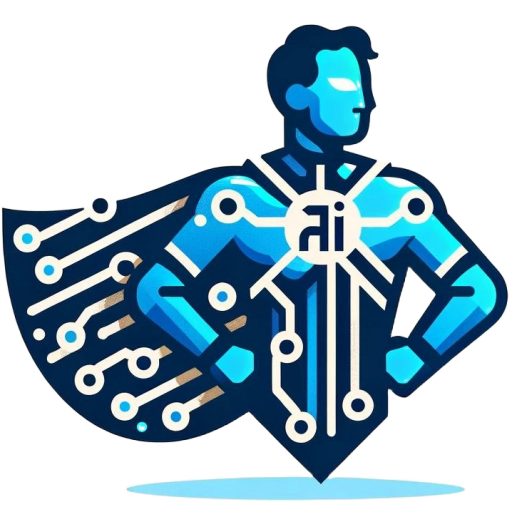Last Updated: February 5, 2024
In a world where hunger affects one in ten people globally, leveraging the power of Artificial Intelligence (AI) presents a unique and hopeful pathway towards mitigating this crisis. This article delves into five AI-driven strategies to combat world hunger, providing detailed action steps for different stakeholders. Each strategy is designed to be pragmatic and feasible with current or near-future technologies.
Predictive Analytics for Enhancing Crop Yields
The Challenge: Unpredictable weather patterns and climate change have made traditional farming practices increasingly unreliable. The World Food Programme highlights conflict and climate shocks as significant drivers of the hunger crisis.
AI Solution: AI can process vast amounts of data, including weather patterns, soil conditions, and historical crop performance, to predict future crop yields with remarkable accuracy. This predictive power enables farmers to make informed decisions, optimize crop rotations, and implement timely interventions to prevent crop failures. Using AI to boost crop yields isn’t science fiction – it’s already happening.
Action Steps:
- Farmers: Leverage AI tools like IBM’s Watson or similar platforms for insights on planting times, crop rotation, and predictive weather impacts.
- Agricultural Institutions: Facilitate access to AI tools and data analytics training for farmers.
- Governments and NGOs: Invest in rural digital infrastructure to enable widespread use of AI tools in agriculture.
Optimizing Food Distribution Networks
The Challenge: Inefficiencies in the food distribution networks lead to significant food waste, while millions go hungry. Action Against Hunger reports a 65% funding gap in countries with the most urgent needs.
AI Solution: AI algorithms can optimize logistics and distribution networks, ensuring that food is transported from farms to markets and consumers in the most efficient way possible. This optimization can reduce food waste and ensure that food reaches the areas where it is most needed.
Action Steps:
- Supply Chain Managers: Implement AI-driven logistics solutions to optimize food distribution routes and schedules.
- Policy Makers: Encourage the adoption of AI in supply chain management through subsidies and incentives.
- Logistics Companies: Invest in AI to enhance operational efficiency and reduce food spoilage during transportation.
AI-Powered Agricultural Advisories
The Challenge: Many farmers, especially in developing countries, lack access to up-to-date information on best agricultural practices and market trends.
AI Solution: AI-driven advisory systems can provide real-time, personalized guidance to farmers. These systems can offer advice on everything from pest control to optimal harvesting times, significantly improving crop yields and quality.
Action Steps:
- Farmers: Adopt AI-based mobile applications like Plantix for personalized farming advice.
- Agricultural Departments: Host training sessions on AI tools and their benefits for local farmers.
- Tech Companies: Develop and provide affordable AI-based agricultural advisory apps for different regions and crops.
Reducing Food Waste through AI
The Challenge: A significant amount of food is lost or wasted due to overproduction, improper storage, and inefficient supply chains.
AI Solution: AI can help predict food demand more accurately and monitor storage conditions to reduce waste. This is particularly important for perishable goods like fruits and vegetables.
Action Steps:
- Retailers and Restaurateurs: Utilize AI-driven tools for inventory management and demand forecasting.
- Consumers: Use apps like NoWaste to track and manage food usage at home.
- Food Banks and NGOs: Implement AI to optimize the collection and distribution of surplus food.
AI in Nutritional Analysis and Diet Planning
The Challenge: Malnutrition remains a significant challenge, particularly in developing countries. In 2022, as many as 783 million people faced hunger globally, with malnutrition affecting children disproportionately.
AI Solution: AI can analyze nutritional content and dietary needs, assisting in creating effective, region-specific nutrition programs. It can also help design diets that are both nutritious and aligned with local food availability.
Action Steps:
- Health Workers and Nutritionists: Use AI tools for creating tailored diet plans based on local food resources and nutritional needs.
- Educational Institutions: Integrate AI-based nutritional tools into health and education programs.
- NGOs: Deploy AI-based nutritional analysis in their food aid programs to ensure balanced diets.
Next Steps for Various Audiences
For Farmers
- Explore AI tools and seek training in data analytics and AI applications.
- Collaborate with tech companies and NGOs to access AI-based agricultural advisories.
For Governments and NGOs
- Invest in digital infrastructure to enable AI adoption in agriculture.
- Support research and development in AI for agricultural and nutritional applications.
For Business Owners
- Utilize AI for supply chain management, reducing waste and improving efficiency.
- Invest in AI-driven market analysis tools for better decision-making.
For Consumers
- Adopt AI apps for efficient food management and waste reduction at home.
- Support initiatives and businesses that use AI to tackle food-related challenges.
For Educators and Health Workers
- Promote nutritional education programs incorporating AI tools for diet analysis and planning.
- Implement AI tools in community health programs to address malnutrition, focusing on children and vulnerable populations.
For Technology Developers and Researchers
- Innovate and develop accessible AI solutions tailored to agricultural and nutritional needs, particularly in developing countries.
- Collaborate with agricultural and food distribution sectors to understand and address their challenges with AI.
Conclusion
AI holds immense potential in addressing the multifaceted challenge of world hunger. From enhancing agricultural yields to optimizing food distribution and improving nutritional outcomes, AI can be a pivotal tool in this global fight. However, realizing this potential requires concerted efforts from all sectors – farmers, governments, NGOs, businesses, consumers, educators, and tech developers. By taking specific, targeted actions, each group can contribute significantly to this cause.
In a world where technology and humanity intersect, AI emerges not just as a technological marvel, but as a beacon of hope in our collective journey towards a world free of hunger.
For more detailed information on the global hunger crisis and the role of AI in addressing it, you can refer to the following sources:

Leave a Reply